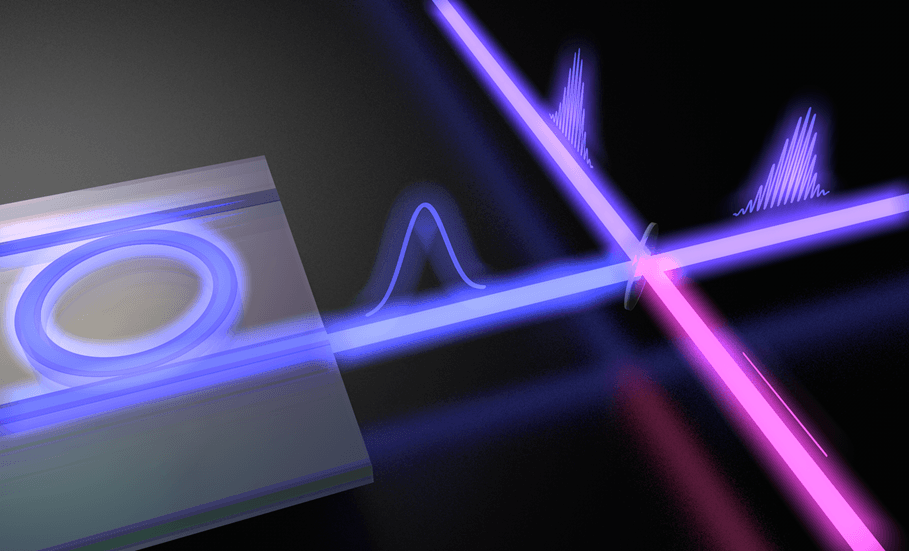Jan 24 2017
 Narrow-bandwidth pulses, produced by a new scheme using a microring resonator, are characterized with a beating technique. CREDIT: Ultrafast Optical Processing Group, INRS Energie Materiaux Telecommunications Research Centre.
Narrow-bandwidth pulses, produced by a new scheme using a microring resonator, are characterized with a beating technique. CREDIT: Ultrafast Optical Processing Group, INRS Energie Materiaux Telecommunications Research Centre.
The constraints and limitations related to ultra-fast pulsed lasers have been redefined, thanks to the research by the Ultrafast Optical Processing Group at the Institut national de la recherche scientifique (INRS).
The research team headed by Professor Roberto Morandotti has developed what could be the first pulsed passively mode-locked nanosecond laser. The new mode-locked laser has a record-low and transform-limited spectral width of 105 MHz, which is more than 100 times lower than mode-locked lasers developed till date.
The study has been reported in the Nature Photonics journal. The new laser has opened the doors for full on-chip integration for spectroscopy and novel sensing implementations by means of its modest power requirements, compact architecture, and the peculiar potential to resolve the complete laser spectrum in the radio frequency (RF) domain.
Lasers that emit intense light-pulse trains have been applied to observe a number of phenomena in various research disciplines. They are also fundamental in carrying out state-of-the-art experiments in modern physics, biology, chemistry, and astronomy.
Despite this, one of the major drawbacks of high pulse intensities with low repetition rates is mediocre noise properties. This creates the need to use passively mode-locked laser systems because they are the optimal choice for the generation of low-noise optical pulse trains.
For instance, such systems have helped in developing intense ultra-short pulses, that is, single-cycle pulses in the attosecond regime, for analyzing high-intensity light-matter interactions as well as in developing stable optical frequency references in the field of metrology (Nobel Prize, 2005).
Despite the fact that numerous mode-locking techniques for creating increasingly shorter pulses of broader spectra have been developed, there has been limited success in overcoming the generation of stable nanosecond narrow-bandwidth pulsed sources.
In their most recent publication, the researchers present an innovative laser design that benefits from the recent developments in nonlinear micro-cavity optics, paving the way for further innovation. Specifically, they have used the narrowband filter properties of integrated microring resonators, enabling nanosecond pulses to be generated through mode-locking as well as allowing high nonlinear phase shifts.
The pulsed laser output generated has a spectral bandwidth so narrow it is inaccessible with state-of-the-art optical spectrum analyzers.
Michael Kues, Postdoctoral Fellow, INRS
The researchers applied a coherent optical beating technique instead to characterize the bandwidth of the laser. The record-low laser bandwidth enabled the full spectral characteristics of a mode-locked laser in the RF domain to be measured for the first time by making use of largely available RF electronics only, thus confirming the strong temporal coherence of the laser.
Stable narrow-bandwidth nanosecond pulsed sources such as these are highly desirable not only for a number of microscopy and sensing applications but also for the efficacious excitation of molecules and atoms (characteristically presenting narrow excitation bandwidths).
The combination of tractable and lower number of optical laser modes and the RF-accessibility of the related spectrum render the laser recently developed by the research team to be highly useful for further analysis of complex mode-locking and nonlinear mode coupling regimes.